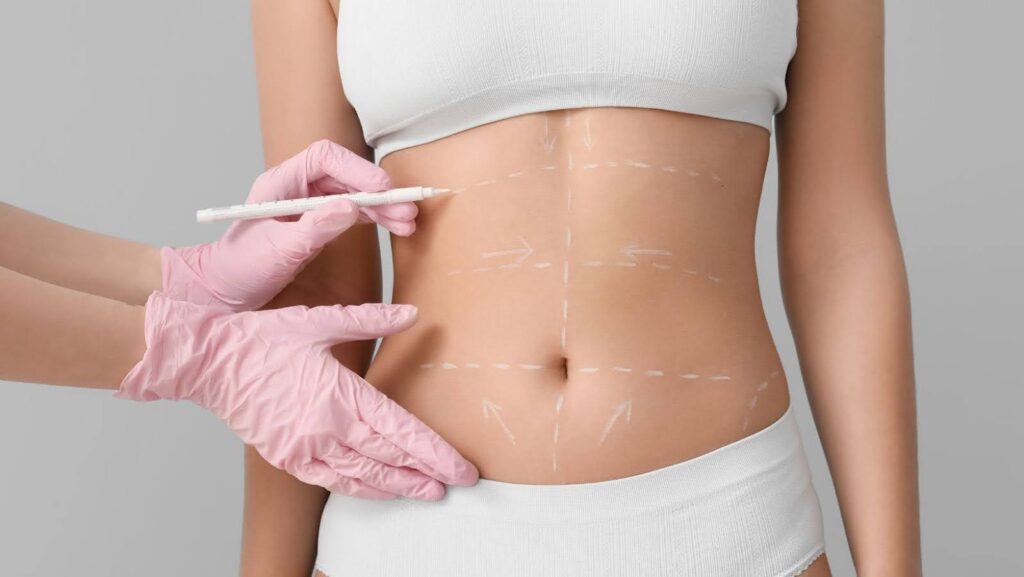Liposuction ranks among the most commonly performed cosmetic procedures worldwide, offering fast, visible results for individuals seeking body contouring. But once you’ve undergone the treatment, how long do liposuction results last, and does fat come back?
This blog explores what really happens to fat cells after a liposuction procedure, what to expect long term, and how to maintain your results.
What Is Liposuction and How Does It Work?
Liposuction is a cosmetic fat removal procedure designed to sculpt targeted areas of the body through fat removal. It works by targeting stubborn fat deposits that don’t respond to diet and exercise. During the process, a slim tube called a cannula is used under the skin to suction out fat cells.
Whether it’s traditional lipo, nonsurgical lipo, or laser-assisted techniques, all forms aim to reduce localized fat and refine body contours. Typical areas treated include the abdomen, thighs, arms, back, and chin.
Will Fat Come Back After Liposuction?
Even though the fat cells taken out are permanently removed, the fat can still grow back, just not in the same way. If you gain weight after liposuction treatment, the remaining fat in your body can still enlarge.
Does Liposuction Remove Fat Cells Permanently?
Liposuction permanently removes fat cells. Once these cells are suctioned out, they do not regenerate in the same area. A 2012 study found no evidence of fat returning to treated areas even after a year, reinforcing the permanence of liposuction results.
What Happens If You Gain Weight?
- Small Weight Gain (2-5 lbs): May slightly affect results, but treated areas usually stay more sculpted.
- Moderate Weight Gain (5-10 lbs): Fat redistributes to untreated areas first.
- Significant Weight Gain (10% or more): New fat cells may form, even in treated areas.

However, most people still look better than they would have without the liposuction treatment, because the areas that were treated contain fewer fat cells and are less likely to expand significantly.
Maintaining Your Liposuction Results
Achieving great results is only the beginning. Maintaining them requires a commitment to healthy living.
Most Practices for Long-Term Results
- Follow Post-Op Instructions: Your liposuction clinic will provide guidelines on wound care, garment use, and physical activity.
- Eat Nutrient-Rich Meals: Focus on lean protein, vegetables, and healthy fats.
- Avoid Crash Diets: Skipping meals can slow your metabolism and trigger fat storage.
- Stay Active: Regular exercise helps regulate body weight and prevents visceral fat buildup.
- Stay Hydrated: Drinking water supports metabolism and reduces bloating.
In a 2012 study, women who exercised after liposuction maintained their results and avoided fat regain. Those who did not exercise developed a 10% increase in visceral fat within six months.
When Will I See the Final Liposuction Result?
Final results from liposuction are typically visible between 1 to 3 months after the procedure. Swelling gradually goes down, and your new shape becomes more defined. Full healing can take up to six months, especially for larger treatment areas.
Are There Differences in Result Longevity Between Techniques?
Certain advanced techniques, like laser-assisted liposuction, may offer better long-term outcomes.

A 2015 study suggested that these methods may preserve more viable tissue, leading to smoother contours and fewer complications over time.
Liposuction vs. Weight Loss: Know the Difference
Liposuction should not be viewed as a weight loss method. It targets problem areas—not overall body fat. If you’re looking for a slimmer figure across your entire body, traditional weight loss through diet and exercise is still necessary.
| FAQ: Liposuction and Fat Regrowth |
| How does liposuction work?Liposuction works by physically removing fat cells from the body. The surgeon inserts a cannula through small incisions and moves the cannula to dislodge fat cells, which are then suctioned out. The process targets fat cells beneath the skin, specifically in areas where fat tends to accumulate and is resistant to diet and exercise. The result is a more sculpted and contoured appearance. Because the removed fat cells do not grow back, the changes in body shape are long-lasting. However, the overall success of the liposuction procedure depends on the technique used, the experience of the surgeon, and the patient’s commitment to maintaining a stable body weight post-procedure. |
| Is liposuction permanent?The results of liposuction are considered permanent in terms of fat cell removal. Once the fat cells are extracted during the procedure, they are gone for good. This makes liposuction results long-lasting, especially in the treated areas. However, this doesn’t mean you’re immune to weight gain. If your lifestyle leads to an increase in calories without sufficient activity, your remaining fat cells—both in treated and untreated areas—can still expand. In more significant weight gain scenarios, your body may create new fat cells, potentially affecting even the treated regions. For best results, patients are encouraged to follow a healthy diet, exercise regularly, and avoid large fluctuations in weight. |
| How much fat can be removed with liposuction?The amount of fat removed during liposuction treatment varies based on patient safety guidelines and body composition. Generally, a surgeon may remove up to 5 liters of fat per session, which is roughly 11 pounds. This volume is considered the safe upper limit for most outpatient procedures. Removing more than that in a single session increases the risk of complications. It’s important to understand that liposuction is not a weight-loss method. The goal is to improve body contours, not drastically reduce your weight. Your surgeon will determine how much fat to remove based on your body goals and what can be safely extracted without harming underlying tissues. |
Conclusion
Liposuction offers lasting results, especially when paired with a healthy lifestyle. While liposuction results are technically permanent due to the removal of fat cells, maintaining those results depends on your long-term habits.
If you’re considering a liposuction procedure, consult a reputable clinic that offers realistic expectations and post-treatment support. Whether you choose traditional lipo or explore nonsurgical lipo, understanding how fat behaves post-treatment is essential for lasting success.
